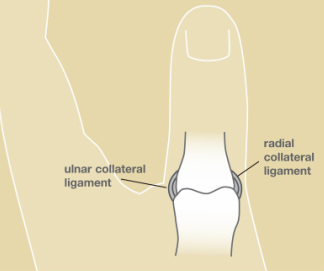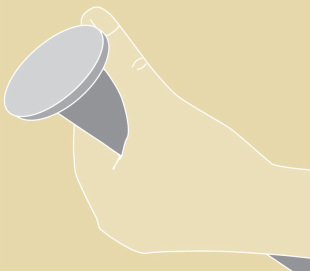MAKE AN APPOINTMENT TODAY!
Skier's Thumb
|
Skiing and snowboarding are among the most popular winter sports. Injuries to the upper extremity occur in a relatively predictable pattern. Fortunately, there are some ways to help decrease the chance for injury.
The most common upper extremity ski injury is to a thumb ligament called the ulnar collateral ligament (UCL) of the metacarpophalangeal joint. It is the ligament on the inner aspect of the thumb at the second joint from the thumb tip (see Figure 1). A ligament is the soft tissue that connects bones to bones. This skii injury occurs when the ski pole does not release from the hand and the pole places a bending stress to the thumb (see Figure 2). If you fall while skiing and your inner thumb hurts, it may be from a “skier’s thumb,” or UCL injury, and you should see a hand surgeon. Your surgeon will determine whether it is a partial or complete ligament tear. A partial tear is usually treated with a cast or splint, whereas a complete tear is treated with surgery to repair the ligament since the torn end of the ligament often gets trapped behind a muscle. |
The chance of getting a “skier’s thumb” injury may be decreased by NOT using your ski pole strap around your wrist. Using ski poles without platforms or saber handles decreases your chance of injury. The main goal is that you want the ski poles to release from your hands when you fall. If the ski pole stays in your hand throughout your fall, the pole can act as a long lever arm to put a large stress load on the thumb joint. If you fall, it is better to lose your poles and protect your thumbs.
Reproduced with permission from the American Society for Surgery of the Hand www.handcare.org
Disclaimer and Privacy
IZADIHAND.COM © 2011-2022 Kayvon David Izadi MD - All Rights Reserved
Webmaster
IZADIHAND.COM © 2011-2022 Kayvon David Izadi MD - All Rights Reserved
Webmaster


